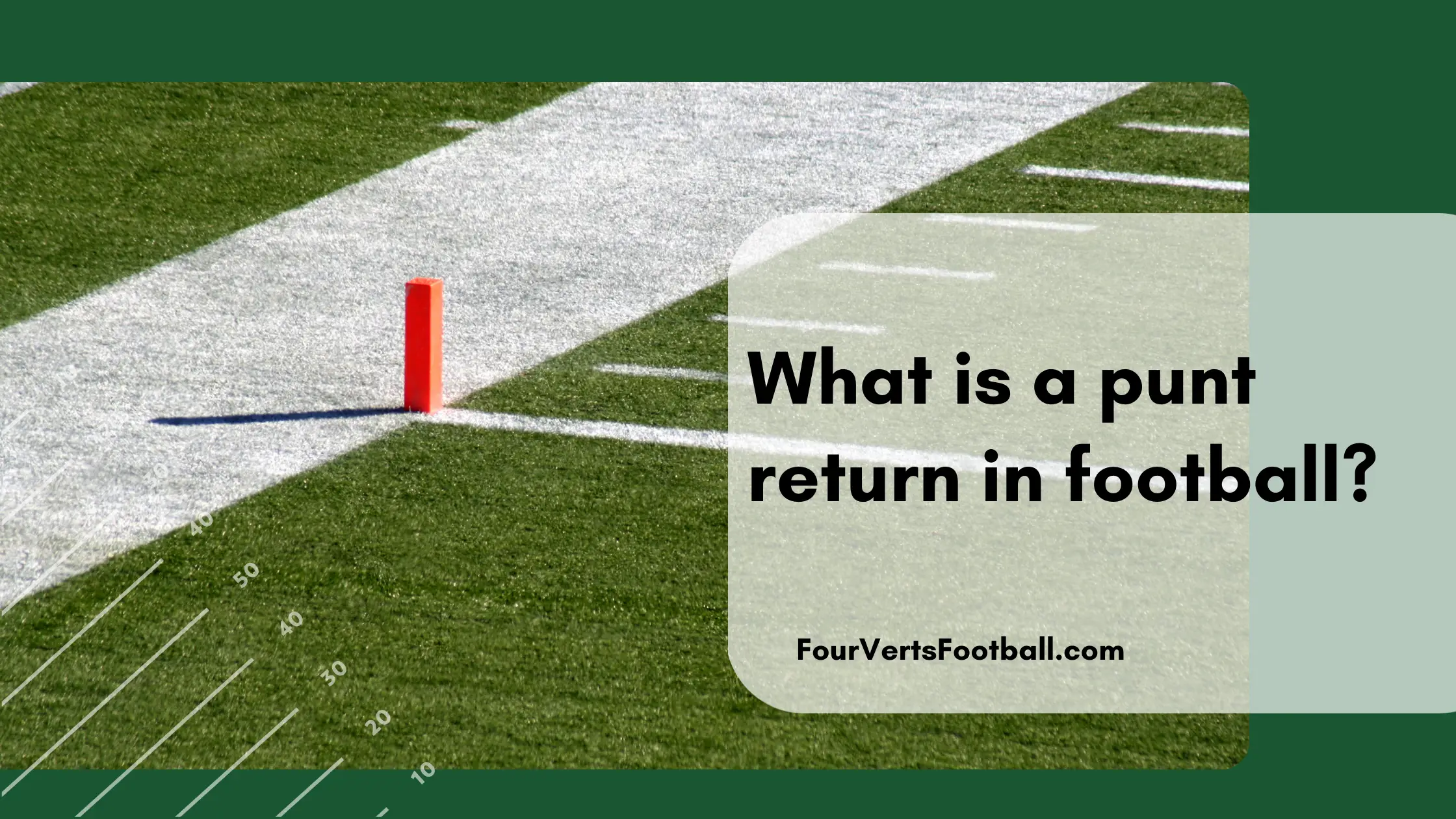A punt return in football is a play that occurs after the team in possession of the ball decides to punt the ball. On a punt return one player will catch the ball and run towards their opponent’s end zone. The other ten players on the receiving team will attempt to block their opponents.
Punt returns are important in football because they determine where the receiving team is going to start their next drive.
If the punt return team has a great return they will often find themselves in great field position.
What does a punt return look like?
A punt return in football starts with the punt return team attempting to block the punt. On these plays blocking the punt is going to result in better field position than almost any punt return.
The punt return team will send six or more players to block the punt to start the play.
These players will attempt to get through the line of blockers in front of the punter in order to get a hand on the ball.
The punt return team will also have two to four players lined up on the sideline ready to block the gunners.
Gunners are players on the punt team which run downfield right as the play starts in order to put themselves in a position to tackle the punt returner.
The blockers in front of the gunners will attempt to block, slow, and force the gunners out of bounds. This will buy the punt returner more time and space once he receives the ball.
The punt returner himself will be the lone player that starts the play far back from the line of scrimmage. This player will wait where he believes the punt will arrive but will usually have to adjust their location once the ball is kicked.
Ideally, the punt returner will attempt to catch the punt before it hits the ground.
Once the ball is punted the players going for the punt block will now change their assignment. These players looking to block the punt will now start to block the punting team’s players.
All the players that were protecting the punter will now start to work their way downfield to tackle the punt returner.
This will usually result in several unblocked players approaching the punt returner. This makes it difficult for the punt return team to gain many yards on these plays.
The last thing the punt returner wants to do is muff the punt and allow the other team to recover the ball.
Understanding the rules of punt returns
Now that you know what a punt return looks like it is time to learn some of the most important rules regarding punt returns.
Fair catch
One of the most important rules regarding punt returns is the fair catch. If the punt returner calls for a fair catch then the player will be downed at the location he catches the punt.
The defense will not have to tackle the punt returner as he cannot return the ball once he calls for a fair catch.
Fair catches are called for when the punt returner realises there are going to be too many defenders near when he catches the ball.
Instead of taking a big hit and potentially fumbling the punt returner can simply wave his hand in the air to signal for a fair catch.
The punt team cannot contact the punt returner before he catches the ball so calling a fair catch allows the punt returner to catch the ball and secure it without having to deal with any contact.
Touchback
Another important rule in punt returns is touchbacks. On a punt, if the ball travels into the endzone a touchback will be called and the punt return team will start with the ball at their twenty-yard line.
For this reason, the punt team does not want the ball to go in the endzone on a punt.
There are two ways in which the punt team can stop the ball from going into the endzone. First, the punter is able to kick the ball out of bounds on a punt.
Unlike a kickoff punting out of bounds is legal and the punt return team will start their next drive at the location the ball went out of bounds.
If the punter is able to kick the ball out of bounds close to the end zone this is referred to as a coffin corner.
Additionally, teams are able to down the ball by catching it themselves. If a player on the punt gets possession of the ball it will be downed at their location.
This means if a punt team player can grab the ball before it goes into the endzone then they will force the opposing team to start their drive close to their endzone.
Conclusion
I hope that you enjoyed our guide to understanding punt returns in football. If you want to learn more about special teams or punting in general we have plenty of great content on our site.
Our articles on if you can catch your own punt as well as why teams always punt on fourth down are a great place to start.

